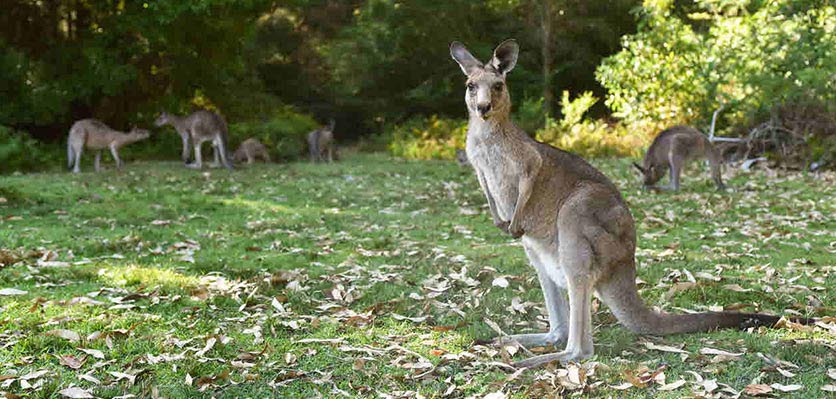
The kangaroo industry in Australia is one of the best-managed wildlife harvests in the world, based as it is on a sound understanding of the ecology of the kangaroo, adjustable quotas and monitoring of population size. At the moment a small percentage of the allowable quota is harvested.1 To an extent this is because animal rights groups have organised bans on the use of kangaroo products overseas. In 2016 the commercial harvest was just 14% of the available quota or 1.8% of the population, and the commercial harvest is having little effect on population numbers.
Currently, kangaroos do not have any value for landholders. This has affected the decisions of large investors and corporate agriculture who could finance better management of kangaroos. Landholders comment that they are left to bear the costs, including fencing and culling, of caring for a national icon.2
It has long been argued that kangaroos should have a value for landholders and that the formation of cooperatives of landholders, working with the commercial industry and sharing profits, would improve land management, biodiversity and, ultimately, the welfare of kangaroos, by changing their status from being a pest to being part of the production system.3 Kangaroo co-production should be part of the process of ensuring that agriculture performs at its best and ensure that more sustainable, innovative and improved land management practices are adopted.3
On the rangelands where kangaroo harvesting mostly occurs, it has been estimated that reducing cattle and sheep populations by 20% would lower Australia’s greenhouse gases by 16.4 megatonnes or 3% of Australia’s total emissions.4
The Food Climate Research Network (FCRN) of the Oxford Martin Programme on the Future of Food conducts, synthesises and communicates research on food systems and sustainability. Their recent report analyses cattle production systems and greenhouse gas emissions look at all sides of the argument:5 Cattle as greenhouse gas emitters, free-range versus feedlot and cattle grazing as a means of removing carbon from the environment. They asked one question: What is the net climate impact of grass-fed ruminants, taking into account all greenhouse gas emissions and removals? It was found that grazing livestock, even in a best-case scenario, is net contributors to the climate problem, as are all livestock, and that good grazing management cannot offset its own emissions, let alone those arising from other systems of animal production.
The demand for soy and grains to feed pigs, poultry and intensively reared cattle also poses a threat because of the conversion of grassland to grow such grains and the release of carbon stored in it. It's a complex issue. For example, if food waste was a country, it would be the world’s third-biggest annual greenhouse gas emitter.6 About 1.3 billion tons, or one-third of the edible food produced for human consumption, are wasted along the food chain. According to the FAO, if even half of this went to hungry people, hunger would be eradicated.
In Australia, total grazing pressure is an important consideration in livestock production. This is the combined grazing pressure exerted by all stock, domestic and wild, native and feral, on the vegetation, soil and water resources of rangeland areas. Improved management of total grazing pressure will ensure that the sustainable capacity of rangelands is not exceeded and will help maintain the proper functioning of ecosystems and the survival of native species. Rangelands ecosystems are not suited to intensive agriculture.
In the western rangelands of NSW, landholders have become increasingly concerned about the pressure on the land as a result of massively increased numbers of kangaroos. Landholders are genuinely concerned about the animal welfare implications of drought on these animals when the current good times end. There are no simple solutions. A workshop was held in Cobar in September 2016, a joint initiative of the Western Lands Advisory Council and Local Land Services Western Region, aimed at developing an informed and collaborative approach to sustainable kangaroo management in western NSW.2
A working group was formed with interested stakeholders, including the AVA, RSPCA, landholders, aboriginal groups, government, and kangaroo harvesters, to continue the discussion. Managing kangaroos is a controversial issue and it's difficult to find a solution that equally satisfies conservationists, industry, and landholders.
It's not just the issue of too many kangaroos coming into conflict with livestock production. There is a growing body of evidence that overabundant numbers of kangaroos can harm the environment by damaging grasslands. Overgrazing by kangaroos reduces vegetation cover, making small native animals more vulnerable to predation by cats and foxes, and rare species find it even harder to survive. In addition, damage to grasslands reduces insect numbers and habitat for ground-dwelling birds for nesting and feeding and reduces the number of reptiles. Biodiversity loss is a very real risk.
Landholders in the Western rangelands would like to see better use of kangaroos with well-regulated harvesting rather than see them starve to death. At the Workshop one landholder made the comment that it was distressing to view hunger in the world when there was an abundant source of protein going to waste.
So where does this fit in with climate change and cattle? Low methane emitting, environmentally friendly kangaroos are a good source of protein. It could be argued that to sustainably feed the projected 9 billion people by 2050 and maintain good animal welfare practices, countries should look at harvesting animals that are best suited to the environment of that country. Climate change is predicted to affect areas of Australia that are currently suitable for livestock production, so there is even more reason to examine the possibility of co-producing kangaroos alongside livestock. Kangaroos could be a source of international competitive advantage for Australian ‘livestock’, especially with the growing consumer demand for a clean, green and natural product. At the moment this valuable resource is going to waste.
It's a discussion worth having and of course veterinarian input is essential in any system of livestock production to ensure the good animal welfare, disease control, and sustainability.
Tanya is a small animal practitioner, author and presenter on veterinary ethics, and a wildlife researcher with a particular interest in macropod marsupials. Tanya is the AVA representative on the NSW Kangaroo Management Advisory Panel and a member of the Western NSW Kangaroo Working Group.
References
- NSW Commercial Kangaroo Harvest Management Plan 2017–21.
- 2017 Quota Report. http://www.environment.nsw.gov.au/resources/ nature/kmp/nsw-commercial-kangaroo-harvest-management-plan- quota-2017-21-160647.pdf. Accessed January 2018
- Berenger M. Kangaroo Management Workshop, Cobar. Aust Vet J 2016;94(11):N22.
- Wilson GR. Co-production of livestock and kangaroos: a review of impediments and opportunities to the collaborative regional management of wildlife resources. In: Proceedings of conservation through sustainable use of wildlife conference. Brisbane, University of Queensland, 2016.
- Garnett T, Godde C, Muller A et al. Grazed and confused. Food Climate Research Network. http://www.fcrn.org.uk/projects/grazed-and-confused. Accessed November 2017
- Wilson, G and Edwards M. Native wildlife on rangelands to minimise methane and produce lower-emission meat: kangaroos versus livestock. Conservation Lett 2008;1:119-128.
This article appeared in the January/February 2018 issue of the Australian Veterinary Journal
